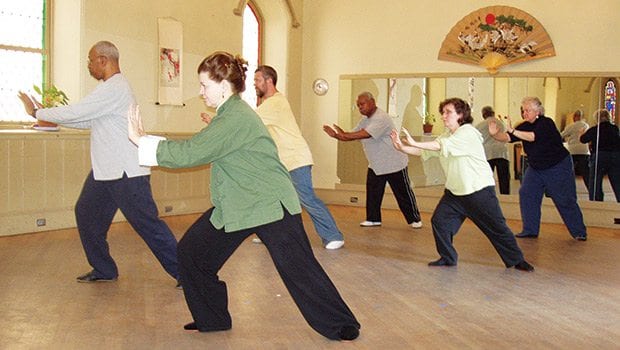
The passing years are often accompanied by an increase in aches and pains. Much of the time it’s a twinge in the knee or lower back that comes and goes. But for some people the pain does not go away, and it can get worse.
The perpetrator is often osteoarthritis, the most common form of arthritis. Osteoarthritis (OA) is one of the leading causes of disability and afflicts an estimated 27 million in the United States alone, according to the Arthritis Foundation.
OA is called degenerative arthritis because the joint literally deteriorates. Cartilage — a hard but slippery tissue that covers the ends of bones — begins to wear away and eventually bone rubs against bone causing not only a grating sound but pain, swelling and loss of motion of the joint. Joint pain in the morning or after a period of inactivity is also common.
About 25 percent of people with knee OA have pain when walking and are limited in normal activities of daily living, such as climbing stairs or kneeling and stooping. Many can walk only with the assistance of a crutch or cane.
The economic impact of OA is staggering. The disease results in 662,000 hospitalizations, 11 million out-patient medical visits and 632,000 total joint replacements each year. It costs the U.S. economy nearly $128 billion per year in medical care and indirect expenses, including lost wages and productivity.
Contrary to a widely held myth, OA is not necessarily a disease of the elderly. Actually, its incidence rises sharply around the age of 45, according to the Centers for Disease Control and Prevention and largely affects those in occupations, such as construction, that put repeated and undue stress on joints. It begins even earlier in people who have sustained a joint injury or were born with a congenital abnormality of the joint. A teen who injures a knee playing football in high school could suffer from OA before the age of 30.
The exact cause of OA is not known, but likely culprits are age, joint damage, inactivity, genetics and obesity. The Arthritis Foundation states that obesity alone increases the chance of developing OA by two thirds in a person’s lifetime. That is why childhood obesity causes great concern. Females are impacted more than men, and are more afflicted in the knees and ankles.
It is hard to predict the path of the disease. Its onset is gradual. Typically, the joints affected are the weight bearing joints — hips, knees and lower back — but the neck and hands are targets as well. Knobby protuberances on the sides of the joint closest to the nail — called Heberden’s nodes — are signs of OA in the hand.
Unlike rheumatoid arthritis, OA follows no set pattern. It can damage one hip and leave the other intact. Symptoms can be so mild that people are unaware of its existence, or severe enough to prevent normal activities.
In addition, the magnitude of pain does not always correlate to X-ray images. A severely deteriorated joint may be pain free, while another that shows little damage can result in pain and decreased function and stability.
OA is not reversible. Once joint damage occurs there is no turning back and there is no cure. But it may be possible to prevent or delay its incidence and reduce its impact once established. For instance, researchers at Wake Forest University have found that for every one pound of weight loss, there is a four-pound reduction in the load exerted on each knee.

The buoyancy provided by water allows patients with osteoarthritis to exercise without pain.
The key is exercise, according to Dr. Elinor A. Mody, the direct of Women’s Orthopedic and Joint Disease at Brigham and Women’s Hospital. “Exercise and muscle strengthening take force off the joints,” she said. “Work on the core (trunk), quadriceps (muscles of the knee) and balance. This is particularly helpful for women.”
For the most part OA can be handled without surgery. The typical first line of attack is over-the-counter drugs, such as acetaminophen and NSAIDS, or non-steroidal anti-inflammatory drugs, such as aspirin and ibuprofen. More severe pain may require narcotics or injections of steroids into the joints.
Topical analgesic creams are helpful to some, while heat or cold can relieve others’ pain. A study conducted by the National Institutes of Health determined that the supplement glucosamine chondroitin sulfate did not improve joint structure or significantly reduce the pain of OA of the knees. The authors, however, were quick to point out that if patients report benefit, there is no reason to suggest they should be taken off of their supplements.
Another alternative form of medicine has shown measurable improvements in knee function and pain relief. A 2005 study published in the Annals of Internal Medicine was able to demonstrate that acupuncture — in conjunction with other therapies — was successful in improving knee function and relieving pain in people with OA of the knee.
Yet, contrary to common belief, osteoarthritis is not an inevitable part of aging. The blueprint for prevention includes education, physical activity, injury prevention and weight control.
For an interactive tutorial on OA visit Medline Plus.






